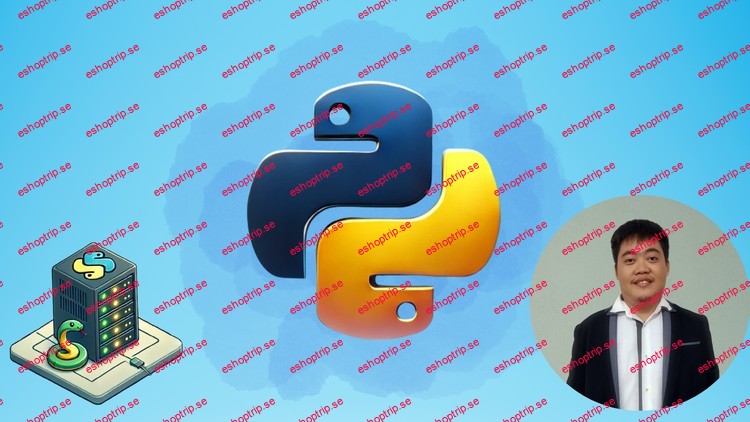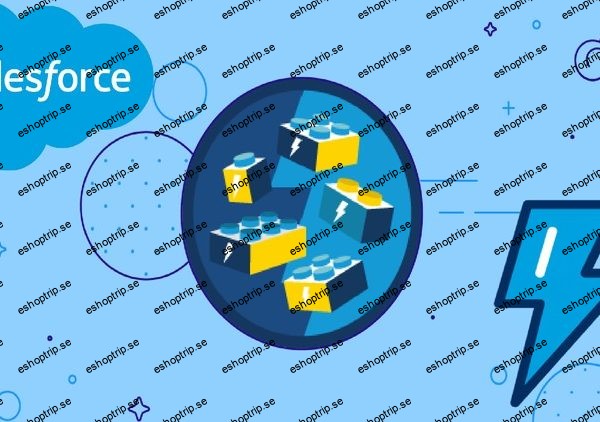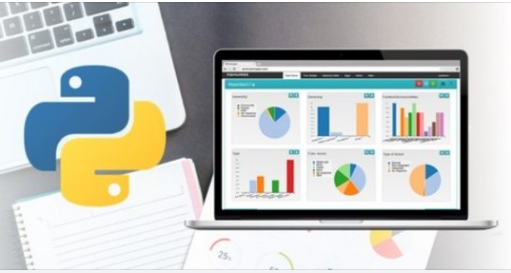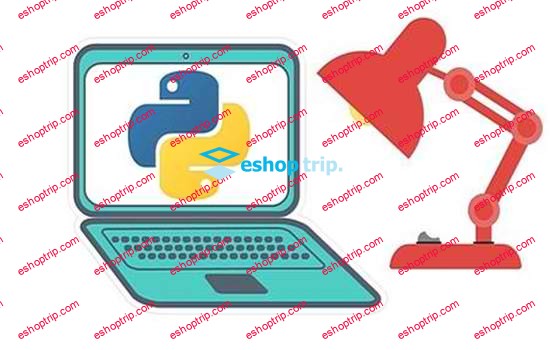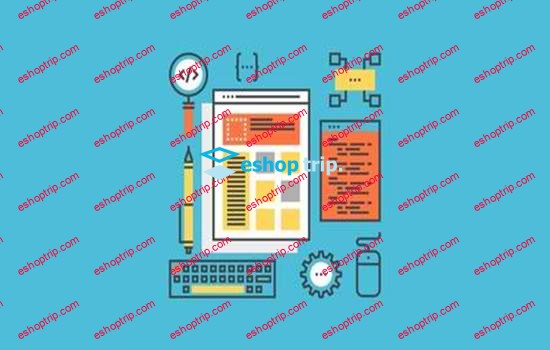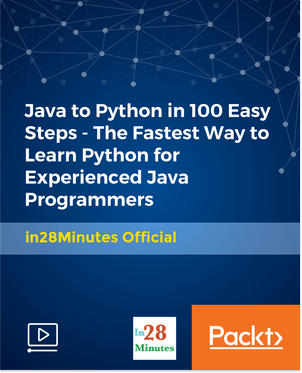Published 8/2024
Created by Paul Carlo Tordecilla
MP4 | Video: h264, 1280×720 | Audio: AAC, 44.1 KHz, 2 Ch
Genre: eLearning | Language: English | Duration: 63 Lectures ( 4h 11m ) | Size: 1.41 GB
From Fundamentals to Advanced Techniques: A Step-by-Step Guide to Creating Scalable and Secure Microservices in Python
What you’ll learn:
Comprehensive Understanding of Microservices Architecture
Hands-On Experience with Python Frameworks
Advanced Microservices Techniques
Security and Performance Optimization
Real-World Case Studies and Deployment Strategies
Requirements:
Basic Python Programming Knowledge
Familiarity with Web Development Concepts
Understanding of Databases
Willingness to Learn New Tools
Description:
This comprehensive course is designed for developers and software engineers who are eager to dive into the world of microservices, particularly leveraging Python to build scalable, maintainable, and efficient microservice-based applications. Microservices architecture has become the backbone of modern software development, enabling organizations to create complex, distributed systems that can be developed, deployed, and scaled independently. This course will guide you through the entire lifecycle of microservices development, from understanding the fundamental concepts to implementing advanced techniques and best practices.Course Overview and ObjectivesThe course begins with a detailed overview of its structure and objectives, setting clear expectations for what you will achieve by the end of the journey. You will gain a deep understanding of microservices architecture and how it differs from the traditional monolithic approach. This section will also introduce you to the benefits and challenges associated with microservices, providing insights into why organizations are increasingly adopting this architecture despite the complexities it introduces.Introduction to MicroservicesYou will start with the basics of microservices, understanding their architecture and how they compare to monolithic systems. This section will highlight the flexibility and scalability that microservices offer, as well as the challenges such as managing distributed systems and ensuring consistent communication between services. You’ll learn how microservices allow for independent development, deployment, and scaling of different parts of an application, making them ideal for large and complex projects.Benefits and Challenges of MicroservicesMicroservices come with numerous advantages, including improved scalability, faster development cycles, and greater resilience. However, they also introduce new challenges, such as the need for robust inter-service communication and the complexity of managing multiple services. This section will explore these benefits and challenges in detail, providing you with strategies to address common issues and maximize the advantages of a microservices architecture.Introduction to Python for MicroservicesPython is a powerful and versatile language, making it an excellent choice for developing microservices. In this section, you will learn why Python is well-suited for microservices, with a focus on its simplicity, readability, and the vast ecosystem of frameworks and libraries available. You will get an overview of popular Python frameworks such as Flask, FastAPI, and Django, each of which offers unique advantages for building microservices.Setting Up the EnvironmentBefore diving into microservices development, it’s crucial to set up a robust development environment. This section will guide you through the installation of Python, pip, and virtual environments, ensuring that your setup is optimal for microservices development. Additionally, you will learn how to set up an Integrated Development Environment (IDE) like VSCode or PyCharm, tailored for Python development.Introduction to Docker and KubernetesAs microservices are often deployed in containerized environments, you’ll be introduced to Docker and Kubernetes. Docker allows you to create and manage containers, ensuring that your microservices run consistently across different environments. Kubernetes, on the other hand, provides powerful orchestration capabilities, enabling you to manage and scale your microservices efficiently. You will learn the basics of both tools, including setting up a local Kubernetes environment using Minikube.Building Microservices with Flask and FastAPIThe course will delve into building microservices using Flask and FastAPI, two popular Python frameworks. You will start by creating simple microservices, learning about basic setup, routing, and creating RESTful APIs. Flask Blueprints will be introduced to help you organize code into modular components, making your applications more maintainable and scalable. With FastAPI, you’ll explore advanced features like dependency injection and data validation with Pydantic, a powerful tool for ensuring data integrity.Inter-Service CommunicationEffective communication between microservices is crucial for the success of a distributed system. This section will cover various methods for inter-service communication, including HTTP communication using Python’s requests library, and more advanced techniques like gRPC and message queues. You will learn how to set up and use gRPC for efficient and scalable communication, as well as how to implement asynchronous communication with message queues like RabbitMQ and Kafka.Database IntegrationMicroservices often require interaction with databases, whether SQL or NoSQL. This section will guide you through the process of choosing the right database for your microservice, integrating SQL databases using SQLAlchemy, and working with NoSQL databases like MongoDB. You will learn how to perform CRUD operations, design schemas, and manage database migrations, ensuring that your microservices are data-driven and efficient.Service Discovery and ConfigurationAs the number of microservices grows, service discovery and configuration management become critical. You will learn about service discovery tools like Consul and Eureka, which help in dynamically locating services in a distributed environment. Configuration management will also be covered, with a focus on managing configuration through environment variables and tools like ConfigMap and Vault.Authentication, Authorization, and Security Best PracticesSecurity is paramount in microservices architecture. This section will teach you how to implement robust authentication and authorization mechanisms, including JWT and OAuth2, as well as Role-Based Access Control (RBAC) to manage user permissions. You will also learn about security best practices, common threats, and how to mitigate them, ensuring that your microservices are secure from potential vulnerabilities.API Gateway, Load BalancingTo manage traffic and improve the performance of your microservices, you will learn how to set up an API Gateway using tools like Nginx or Kong, and implement load balancing strategies.Advanced Topics and Performance OptimizationAs you progress, the course will introduce advanced topics such as event-driven microservices, CQRS, and event sourcing, as well as serverless microservices using AWS Lambda. Performance optimization techniques will also be covered, including profiling Python applications, optimizing resource usage, and implementing caching strategies with Redis.Documentation, Versioning, and Case StudiesDocumenting your microservices is crucial for maintainability and collaboration. You will learn how to use OpenAPI/Swagger to generate API documentation, and explore strategies for API versioning. The course will also present real-world case studies, providing insights into successful microservices implementations and lessons learned from industry leaders.Maintaining, Scaling, and Troubleshooting MicroservicesFinally, the course will cover strategies for maintaining and scaling microservices, including handling breaking changes and implementing autoscaling with Kubernetes. You will also learn troubleshooting techniques to identify and resolve common issues in microservices architecture, ensuring that your applications remain robust and scalable over time.By the end of this course, you will have a thorough understanding of microservices architecture and the skills needed to build, deploy, and maintain Python-based microservices in a production environment. Whether you’re a seasoned developer looking to expand your knowledge or a newcomer to microservices, this course will equip you with the tools and techniques to succeed in the world of distributed systems.
Who this course is for:
Aspiring Software Developers
Experienced Developers Transitioning to Microservices
DevOps Engineers and System Administrators
Technical Leads and Architects
Anyone Interested in Modern Software Architecture
Homepage
